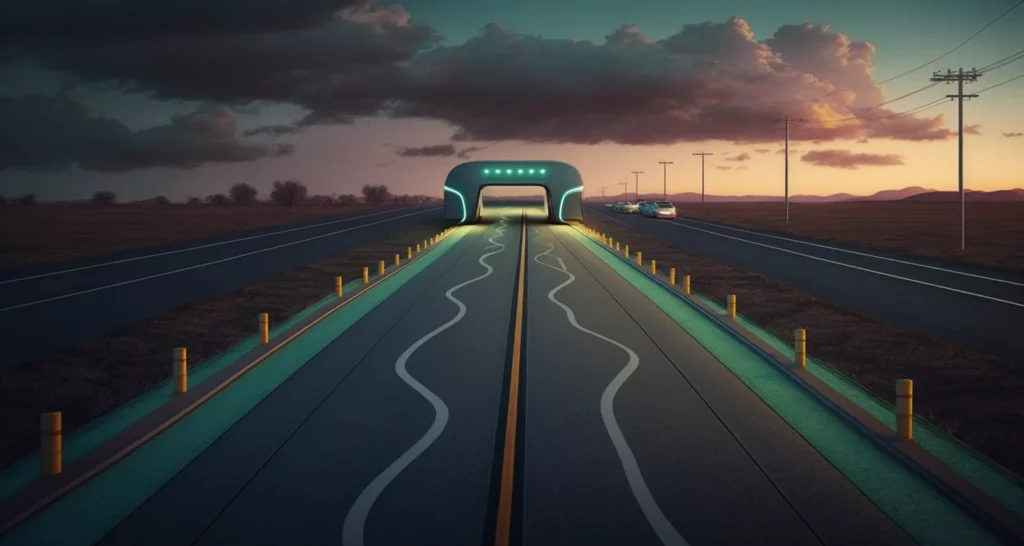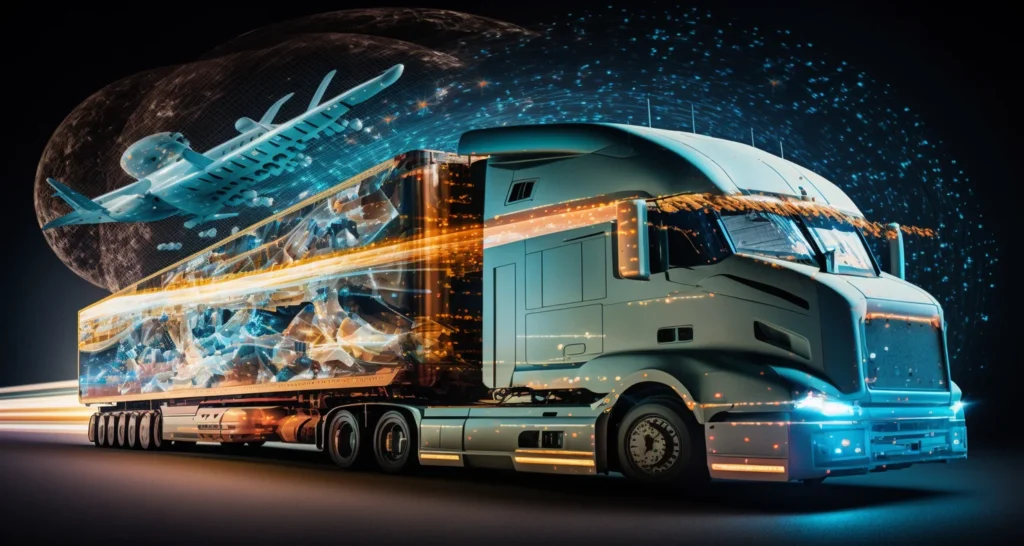The world is rapidly urbanizing, and as cities expand, so does the complexity of their transportation networks. To tackle traffic congestion, minimize accidents, and reduce environmental impact, a paradigm shift is underway with the integration of connected car technologies into intelligent transportation solutions. These technologies hold the key to unlocking safer, more efficient, and sustainable urban mobility. In this article, we delve into the significance of connected car technologies within the broader context of centralized traffic management and intelligent infrastructure systems.
Connected Car Technologies: Revolutionizing Urban Mobility:
Connected car technologies refer to the integration of vehicles with the Internet of Things (IoT) ecosystem, enabling real-time data exchange between vehicles, infrastructure, and central control systems. These technologies encompass a range of features, including vehicle-to-vehicle (V2V) and vehicle-to-infrastructure (V2I) communication, advanced driver assistance systems (ADAS), and autonomous driving capabilities.

Enhanced Data Sharing for Smarter Roads:
Connected cars continuously transmit data, such as speed, location, and traffic conditions, to centralized traffic management systems. This influx of real-time information empowers authorities to make informed decisions, adjust traffic signals dynamically, and reroute vehicles to mitigate congestion. Consequently, roads become adaptable entities that respond to real-world conditions, ensuring smoother traffic flow and reduced bottlenecks.
Safer Roads with Collision Avoidance:
V2V communication enables vehicles to exchange data about their speed, direction, and positions, forming an intricate web of awareness. This real-time sharing facilitates collision avoidance systems that can alert drivers to potential collisions or even take evasive actions autonomously. This capability is poised to significantly reduce accidents and save lives, particularly in busy urban environments.
Optimized Traffic Management:
The integration of connected cars into centralized traffic management systems provides a holistic view of traffic patterns. This allows authorities to predict and prevent traffic jams, enabling efficient route planning for individual vehicles and enhancing overall transportation efficiency. Moreover, connected cars aid in managing public transportation by optimizing schedules, stops, and routes based on real-time demand.
Environmental Sustainability:
By reducing congestion and optimizing routes, connected cars contribute to reduced fuel consumption and greenhouse gas emissions. With smarter traffic management, vehicles spend less time idling in traffic, leading to improved air quality and less environmental impact. This aligns with the broader goal of creating sustainable, eco-friendly urban environments.

Challenges and Considerations:
While connected car technologies hold immense promise, challenges such as data privacy, cybersecurity, and seamless integration with legacy infrastructure systems must be addressed. Striking a balance between data collection for improved traffic management and safeguarding individual privacy is crucial. Furthermore, ensuring robust cybersecurity measures to prevent unauthorized access to vehicular systems is imperative to maintain public trust.
Smart transportation is a key operating component of every smart city. Smart transportation technologies, applications, and data can integrate with other smart city infrastructure systems to address challenges such as mobility, safety, pollution, and congestion. In that context, the Indian government’s five-year 100-city Smart City Mission represents a huge new opportunity for the Indian automotive industry.
But the concept of smart connected-autonomous vehicles is as yet at quite a nascent stage in India. According to one analyst estimate, a mere 1.4 percent of cars in India have even basic connectivity. But there has been a steady stream of announcements that indicate the market rising to the opportunity. Nissan for instance is upgrading three models from its India portfolio this year with connectivity capabilities and an app-based services model. Earlier this year Tata Motors showcased a fully connected concept sports coupe, developed in partnership with Microsoft India, at the Geneva International Motor Show. As part of its Jio Car Connect initiative, Reliance Jio Infocomm is partnering with US-based AirWire Technologies to launch the latter’s connected car device in India and offer a range of app-based communication, entertainment, location, and telematics services. And finally, connected car solutions company Minda iConnect is collaborating with Microsoft India to develop connected vehicle technologies including vehicle-to-vehicle (V2V) and vehicle-to-infrastructure (V2I) communication.
In-vehicle connectivity, which enables the delivery of telematics and other value-added infotainment services, is the entry-level capability in the paradigm of connected automobiles. A smart-city-enabled, so to speak, the connected automobile would have capabilities like V2V and V2I communications, all of which have now been conveniently combined into a manageable V2X or vehicle-to-everything.

A vehicle-to-everything network integrates all communications, transportation, and infrastructure systems to enable a range of performance, efficiency, and safety enhancements. It empowers citizens with real-time information for more efficient route planning, helps reduce congestion and emissions, and enhances safety.
In the U.S, for instance, there is already a proposal to mandate V2V in all new car models starting 2021. Embedded safety systems in automobiles typically work independently and rely on the sensors in the car. But V2V technologies create a collaborative situational awareness by enabling data exchange between vehicles. The shared data is used to alert drivers to potential collisions and hazards, even those that are not in the line of sight of sensors like at blind turns or crowded intersections. The concept even extends to a vehicle-to-pedestrian (V2P) model that covers pedestrians, cyclists, and other road users. Snapdragon Automotive Solutions, from chip giant Qualcomm, and Delphi offer solutions that can alert road users through their smartphones or other connected wearables. Delphi’s self-driving system can even take preventive action based on any sudden risky maneuvers from other vehicles in the vicinity.
V2I technologies allow vehicles to communicate with infrastructure components like road signage or traffic lights for instance.
A V2I service from Audi, for example, uses a 4G LTE connection between the car and a centralized traffic management network to update drivers to wait times at traffic signals. Concurrently the infrastructure is also getting smarter. A smart signal pilot in Pittsburgh resulted in a reduction in travel time by 26 percent, idling time by 40 percent vehicle emissions by 20 percent. Rather than pre-programmed timing and phasing cycles for traffic lights, the smart system monitors actual traffic volumes and then uses a combination of real-time analytics and artificial intelligence to dynamically adapt the signaling sequence to traffic conditions. As early as 2015, Jaguar Land Rover was working with innovation partner Coventry City Council to understand how information about road hazards, like potholes or broken drain pipes and manholes, gathered by the company’s MagneRide platform could be shared with road authorities, maintenance teams, and other vehicles.
In a truly connected smart city like Songdo in South Korea, every automobile is fitted with RFID tags. Aggregated real-time data from all these tags are continuously analyzed at a central hub to identify and mitigate congestion.
So a range of V2X technologies in various forms and applications have been road-tested successfully over the last decade. They now have an established utility as an intelligent transport management system that can enhance driver awareness, manage congestion, optimize traffic flows, reduce emissions, prevent accidents and improve the overall traffic management capabilities of any city. It is also important to understand that connected automobiles are just one component of the transportation infrastructure of a smart city. So city planners will have to take into account the potential for connected/autonomous vehicles, ride-sharing platforms, public transport systems, etc. to operate in concert to address the mobility and logistics needs of the citizenry.
In order to be truly effective, V2X technologies have to be supported by smart communication capabilities embedded in a city’s transportation and other infrastructure systems. The innovative potential of these technologies and their applications have to be integrated into a city’s planning model, not only for their mobility systems but for all infrastructure services. But smart cities represent the ideal testbed for the connected car and vice-versa. And this partnership will in many ways define the way forward for autonomous vehicles.
Conclusion:
In the journey toward intelligent transportation solutions, the integration of connected car technologies plays a pivotal role in reshaping urban mobility. By enhancing data sharing, enabling collision avoidance, optimizing traffic management, and promoting environmental sustainability, these technologies revolutionize the way vehicles interact with each other and the infrastructure around them. As cities continue to grow and evolve, the implementation of connected car technologies stands as a beacon of hope for creating smarter, safer, and more efficient transportation networks that benefit all citizens.













